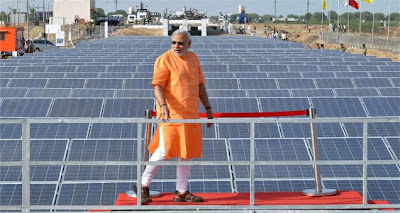An average household dedicates about 10% of its energy budget to lighting. Switching to energy-efficient lighting is one of the fastest ways to cut your energy bills. Timers and motion sensors save you even more money by reducing the amount of time lights are on but not being used.
Indoor Lighting
You have many choices in energy-efficient lighting. The most popular light bulbs available are halogen incandescents, compact fluorescent lamps (CFLs), and light-emitting diodes (LEDs). Although they can initially cost more than traditional incandescent bulbs, over their lifetime they save you money, because they use less energy.
Energy-Saving (also called Halogen) Incandescent Lighting
Energy-saving, or halogen, incandescent light bulbs are about 25% more efficient and can last up to three times longer than traditional incandescent bulbs. They are available in a wide range of shapes and colors, and can be used with dimmers.
CFL Bulbs. ENERGY STAR®-qualified CFLs use about 75% less energy and last up to 10 times longer than traditional incandescents.
CFL bulbs last about 10 times longer and use about one-fourth the energy of traditional incandescent bulbs. A typical CFL can pay for itself in energy savings in less than 9 months and continue to save you money each month.
You can buy CFLs that offer the same brightness and colors as traditional incandescent bulbs. Some CFLs are encased in a cover to further diffuse the light and provide a similar shape to traditional incandescent bulbs.
CFLs contain a very small amount of mercury and require special handling if they are broken. CFLs should be recycled at the end of their lifespan. Many retailers recycle CFLs for free. Visit epa.gov/cfl for cleanup and safe disposal steps.
LED Lighting
LEDs: A New Kind of Light. LED bulbs offer similar light quality to traditional incandescents, last 25 times as long, and use even less energy than CFLs. Choose ENERGY STAR-qualified LEDs for the highest quality and energy savings.
LED bulbs are rapidly expanding in household use. ENERGY STAR-qualified LEDs use only about 20%-25% of the energy and last up to 25 times longer than traditional incandescent bulbs. They come in a variety of colors, and some are dimmable or offer convenient features such as daylight and motion sensors.
In addition to standard screw-in bulbs, you'll find LEDs in applications such as recessed downlights, desk lamps, kitchen undercabinet lighting, and outdoor area lights.
Indoor Lighting Tips
Replacing 15 inefficient incandescent bulbs in your home with energy-saving bulbs could save you about $50 per year. For the greatest savings, replace your old incandescent bulbs with ENERGY STAR-qualified bulbs.
Visit ENERGY STAR to find the right light bulbs for your fixtures. They are available in sizes and shapes to fit in almost any fixture and provide the greatest savings in fixtures that are on for a long time each day.
When remodeling, look for recessed light fixtures or "cans" which are rated for contact with insulation and are air tight (ICAT rated).
When replacing incandescent bulbs from recessed light fixtures, use energy-efficient bulbs that are rated for that purpose. For example, the heat buildup in downlights will significantly shorten the life of spiral CFLs.
Consider purchasing ENERGY STAR-qualified fixtures. They are available in many styles, distribute light more efficiently and evenly than standard fixtures, and some offer convenient features such as dimming.
Controls such as timers and photocells save electricity by turning lights off when not in use. Dimmers save electricity when used to lower light levels. Be sure to select products that are compatible with the energy-efficient bulbs you want to use.
Keep your curtains or shades open to use daylighting instead of turning on lights. For more privacy, use light-colored, loose-weave curtains to allow daylight into the room. Also, decorate with lighter colors that reflect daylight.
Outdoor Lighting
Many homeowners use outdoor lighting for decoration and security. A variety of products are available from low-voltage pathway lighting to motion-detector floodlights.
LEDs work well indoors and outdoors because of their durability and performance in cold environments. Look for LED products such as pathway lights, step lights, and porch lights for outdoor use. You can also find solar powered outdoor lighting.
Outdoor Lighting Tips
Because outdoor lights are usually left on a long time, using CFLs or LEDs in these fixtures will save a lot of energy. Most bare spiral CFLs can be used in enclosed fixtures that protect them from the weather.
CFLs and LEDs are available as flood lights. These models have been tested to withstand the rain and snow so they can be used in exposed fixtures.
Look for ENERGY STAR-qualified fixtures that are designed for outdoor use and come with features like automatic daylight shut-off and motion sensors.
Indoor Lighting
You have many choices in energy-efficient lighting. The most popular light bulbs available are halogen incandescents, compact fluorescent lamps (CFLs), and light-emitting diodes (LEDs). Although they can initially cost more than traditional incandescent bulbs, over their lifetime they save you money, because they use less energy.
Energy-Saving (also called Halogen) Incandescent Lighting
Energy-saving, or halogen, incandescent light bulbs are about 25% more efficient and can last up to three times longer than traditional incandescent bulbs. They are available in a wide range of shapes and colors, and can be used with dimmers.
CFL Bulbs. ENERGY STAR®-qualified CFLs use about 75% less energy and last up to 10 times longer than traditional incandescents.
CFL bulbs last about 10 times longer and use about one-fourth the energy of traditional incandescent bulbs. A typical CFL can pay for itself in energy savings in less than 9 months and continue to save you money each month.
You can buy CFLs that offer the same brightness and colors as traditional incandescent bulbs. Some CFLs are encased in a cover to further diffuse the light and provide a similar shape to traditional incandescent bulbs.
CFLs contain a very small amount of mercury and require special handling if they are broken. CFLs should be recycled at the end of their lifespan. Many retailers recycle CFLs for free. Visit epa.gov/cfl for cleanup and safe disposal steps.
LED Lighting
LEDs: A New Kind of Light. LED bulbs offer similar light quality to traditional incandescents, last 25 times as long, and use even less energy than CFLs. Choose ENERGY STAR-qualified LEDs for the highest quality and energy savings.
LED bulbs are rapidly expanding in household use. ENERGY STAR-qualified LEDs use only about 20%-25% of the energy and last up to 25 times longer than traditional incandescent bulbs. They come in a variety of colors, and some are dimmable or offer convenient features such as daylight and motion sensors.
In addition to standard screw-in bulbs, you'll find LEDs in applications such as recessed downlights, desk lamps, kitchen undercabinet lighting, and outdoor area lights.
Indoor Lighting Tips
Replacing 15 inefficient incandescent bulbs in your home with energy-saving bulbs could save you about $50 per year. For the greatest savings, replace your old incandescent bulbs with ENERGY STAR-qualified bulbs.
Visit ENERGY STAR to find the right light bulbs for your fixtures. They are available in sizes and shapes to fit in almost any fixture and provide the greatest savings in fixtures that are on for a long time each day.
When remodeling, look for recessed light fixtures or "cans" which are rated for contact with insulation and are air tight (ICAT rated).
When replacing incandescent bulbs from recessed light fixtures, use energy-efficient bulbs that are rated for that purpose. For example, the heat buildup in downlights will significantly shorten the life of spiral CFLs.
Consider purchasing ENERGY STAR-qualified fixtures. They are available in many styles, distribute light more efficiently and evenly than standard fixtures, and some offer convenient features such as dimming.
Controls such as timers and photocells save electricity by turning lights off when not in use. Dimmers save electricity when used to lower light levels. Be sure to select products that are compatible with the energy-efficient bulbs you want to use.
Keep your curtains or shades open to use daylighting instead of turning on lights. For more privacy, use light-colored, loose-weave curtains to allow daylight into the room. Also, decorate with lighter colors that reflect daylight.
Outdoor Lighting
Many homeowners use outdoor lighting for decoration and security. A variety of products are available from low-voltage pathway lighting to motion-detector floodlights.
LEDs work well indoors and outdoors because of their durability and performance in cold environments. Look for LED products such as pathway lights, step lights, and porch lights for outdoor use. You can also find solar powered outdoor lighting.
Outdoor Lighting Tips
Because outdoor lights are usually left on a long time, using CFLs or LEDs in these fixtures will save a lot of energy. Most bare spiral CFLs can be used in enclosed fixtures that protect them from the weather.
CFLs and LEDs are available as flood lights. These models have been tested to withstand the rain and snow so they can be used in exposed fixtures.
Look for ENERGY STAR-qualified fixtures that are designed for outdoor use and come with features like automatic daylight shut-off and motion sensors.















.jpg)




















